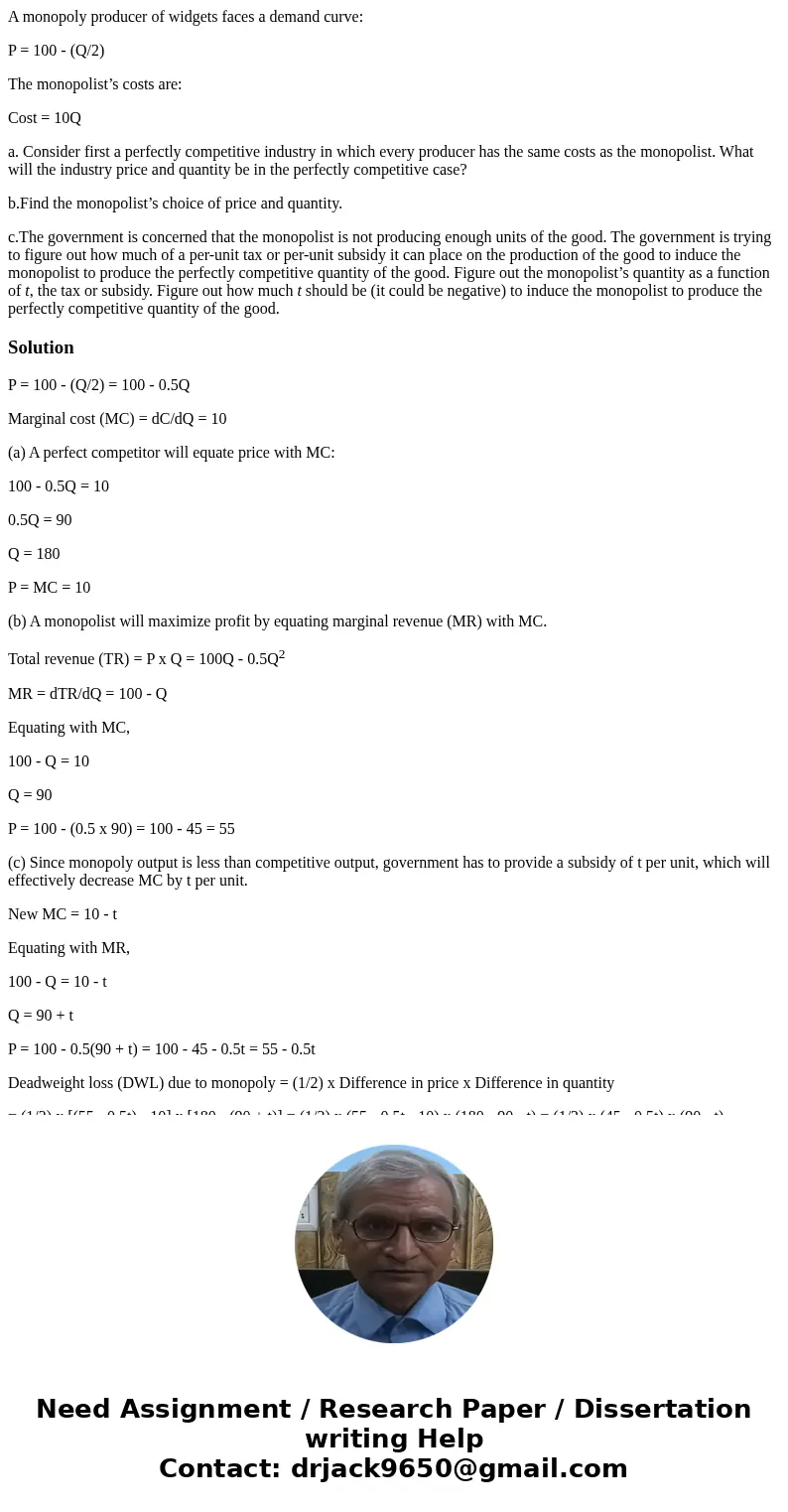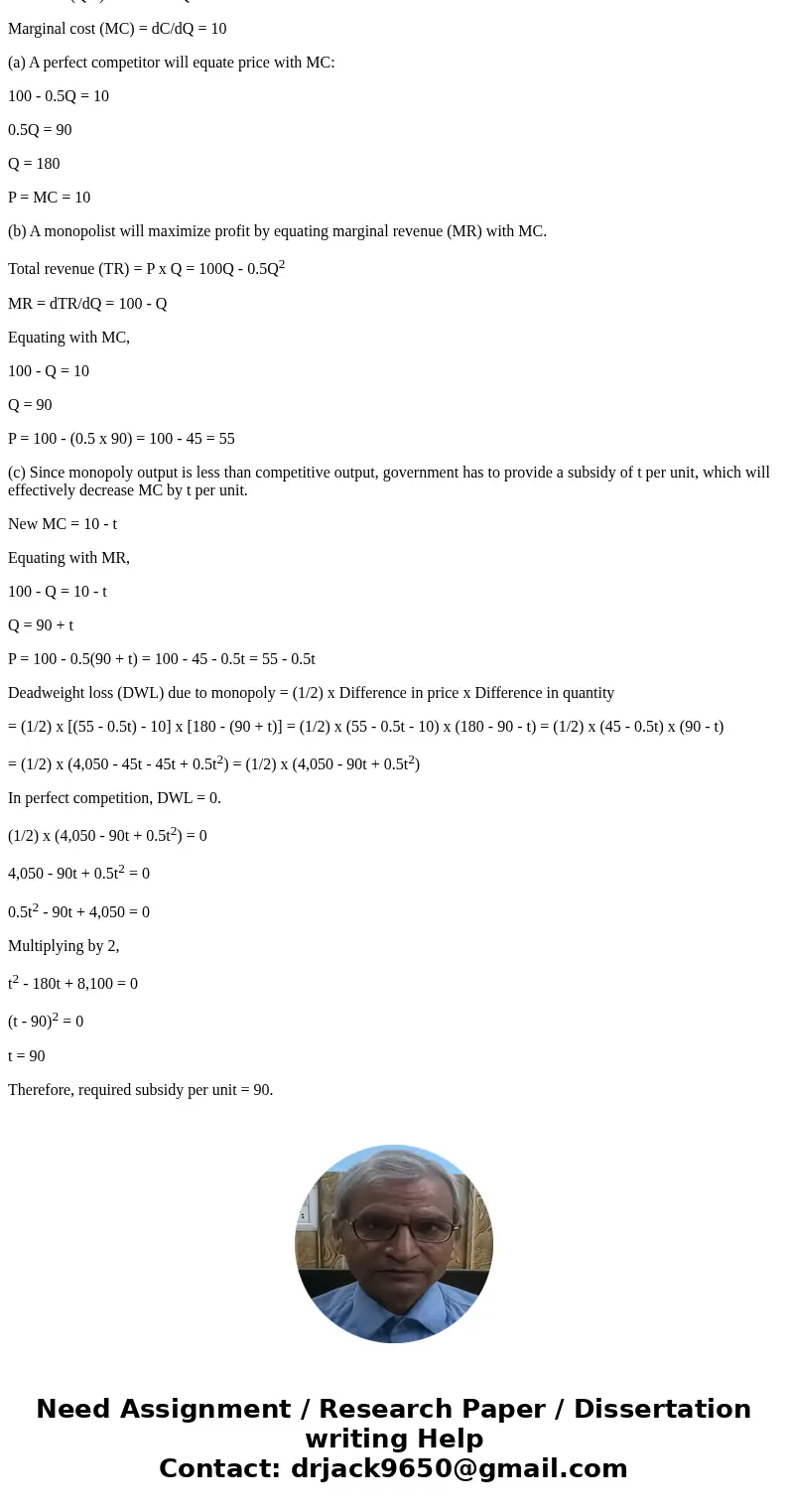A monopoly producer of widgets faces a demand curve P 100
A monopoly producer of widgets faces a demand curve:
P = 100 - (Q/2)
The monopolist’s costs are:
Cost = 10Q
a. Consider first a perfectly competitive industry in which every producer has the same costs as the monopolist. What will the industry price and quantity be in the perfectly competitive case?
b.Find the monopolist’s choice of price and quantity.
c.The government is concerned that the monopolist is not producing enough units of the good. The government is trying to figure out how much of a per-unit tax or per-unit subsidy it can place on the production of the good to induce the monopolist to produce the perfectly competitive quantity of the good. Figure out the monopolist’s quantity as a function of t, the tax or subsidy. Figure out how much t should be (it could be negative) to induce the monopolist to produce the perfectly competitive quantity of the good.
Solution
P = 100 - (Q/2) = 100 - 0.5Q
Marginal cost (MC) = dC/dQ = 10
(a) A perfect competitor will equate price with MC:
100 - 0.5Q = 10
0.5Q = 90
Q = 180
P = MC = 10
(b) A monopolist will maximize profit by equating marginal revenue (MR) with MC.
Total revenue (TR) = P x Q = 100Q - 0.5Q2
MR = dTR/dQ = 100 - Q
Equating with MC,
100 - Q = 10
Q = 90
P = 100 - (0.5 x 90) = 100 - 45 = 55
(c) Since monopoly output is less than competitive output, government has to provide a subsidy of t per unit, which will effectively decrease MC by t per unit.
New MC = 10 - t
Equating with MR,
100 - Q = 10 - t
Q = 90 + t
P = 100 - 0.5(90 + t) = 100 - 45 - 0.5t = 55 - 0.5t
Deadweight loss (DWL) due to monopoly = (1/2) x Difference in price x Difference in quantity
= (1/2) x [(55 - 0.5t) - 10] x [180 - (90 + t)] = (1/2) x (55 - 0.5t - 10) x (180 - 90 - t) = (1/2) x (45 - 0.5t) x (90 - t)
= (1/2) x (4,050 - 45t - 45t + 0.5t2) = (1/2) x (4,050 - 90t + 0.5t2)
In perfect competition, DWL = 0.
(1/2) x (4,050 - 90t + 0.5t2) = 0
4,050 - 90t + 0.5t2 = 0
0.5t2 - 90t + 4,050 = 0
Multiplying by 2,
t2 - 180t + 8,100 = 0
(t - 90)2 = 0
t = 90
Therefore, required subsidy per unit = 90.


 Homework Sourse
Homework Sourse